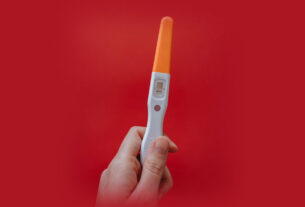Preterm birth/ Preterm labor (PTL) is defined as one where the labor starts before the 37th completed week (< 259 days), counting from the first day of the last menstrual period. Preterm birth is the most significant cause of perinatal morbidity and mortality.
Classification
Preterm: 34 weeks to 37 weeks gestation
Very preterm: 28 weeks (third trimester) to 33 weeks and 6 days gestation
Extreme preterm: < 28 weeks gestation
High-risk factors
- History – There is a high chance of preterm birth in cases such as the previous history of spontaneous or induced abortion
- Smoking, Alcohol, and drug use – It will increase the baby’s risk of being born early
- Complications in present pregnancy such as (a) uterine anomalies-cervical incompetence and malformation of appendicitis. (b) medical and surgical illness- acute fever, diarrhea, acute appendicitis. (c) chronic diseases like hypertension, diabetes, low body mass index
- Uterine and vaginal infections such as bacterial vaginosis
- Maternal Age – Women younger than 18 and older than 35 are more likely to deliver prematurely.
- The short interval between pregnancies – Getting pregnant sooner than 18 months after the last delivery
Signs of early labor
- Backache, which is typically is going to be in your lower back
- Cramping in your lower abdomen
- Increased pressure in your pelvis and down to the vagina
- Significant Increase in vaginal discharge
- Contraction typically every 10 minutes or more often
- Vaginal bleeding
How to check Contractions in preterm labor
- Place your fingertips on your abdomen to identify contractions
- If you feel that your uterus tightening and softening, that is called contraction.
- Time your every contraction. Write down the time when a contraction starts, and the time at the start of the next contraction.
- Try to stop the contractions. Get off your feet.
- Change your position. Relax for some time and Drink two or three glasses of water.
- Call your health care provider in cases such as if you continue to have contractions every 10 minutes or more often. Keep in mind that some women may have harmless false labor called Braxton Hicks contractions.
Symptoms of preterm labor
The baby born prematurely might have mild symptoms to serious complications including:
- Small size, low birth weight
- Sharp looking (less round due to lack of stored fat)
- Fine hair
- Low body temperature
- Respiratory distress
- Feeding difficulties
- Developmental delay
- Vision problems
- Hearing problems
Prevention of Preterm Labor
Preterm labor can happen to any pregnant woman at any time, but you can take a risk to reduce your risk:
- Get regular prenatal care. As soon as you think you may be pregnant and throughout your pregnancy as a prevention
- Avoid tobacco, alcohol, and illegal drugs to decrease the risk
- Talk to your healthcare professional before taking any prescription or over-the-counter medications
- Relax and try to reduce your anxiety level to reduce the risk
- Eat healthy foods, drink plenty of water, more than 3 liters and follow exercise guidelines of your healthcare professional instructions
- Call for help in case of domestic abuse (physical, sexual, or emotional ) to avoid more complication
Primary care is to decrease the incidence of preterm labor by bringing down the high-risk factors (e.g., infections )
Secondary Care consists of screening tests for early detection and prophylactic treatment e.g., tocolytics
Tertiary care is mainly to reduce perinatal morbidity and mortality after the diagnosis (e.g., Use of corticosteroids)
Diagnosis of preterm labor
SYMPTOMS
- CONTRACTIONS
- PRESSURE OVER THE VAGINA
- VAGINAL DISCHARGE
- PREMENSTRUAL LIKE CRAMPING
SIGNS
- SPOTTING
- CONTRACTIONS 6-8/ HR
- CHANGE IN CERVICAL DILATION AND EFFACEMENT
Traditional Diagnostic criteria = CONTRACTIONS + CERVICAL CHANGES
False-positive diagnosis: 40% – unnecessary treatment
False-negative diagnosis: 20% – missed chance for treatment
DIAGNOSIS EXAMINATION
- PELVIC EXAMINATION
- ULTRASOUND
- UTERINE MONITORING CONTRACTIONS
How is preterm labor treated?
- Bed rest either at home or hospital so that it will reduce the risk
- Tocolysis – it will inhibit uterine contractions and delay delivery to allow administration of corticosteroids e.g., magnesium sulfate, Terbutaline, Nifedipine, Indomethacin, Ketorolac, sulindac
- Adequate Hydration is maintained so that it will aid to reduce the chance of preterm labor
- Corticosteroids – To enhance fetal lung maturity and to decrease the risk of RDS, IVH (intraventricular hemorrhage in the brain), and necrotizing enterocolitis
- Short term therapy – The objectives are (i) To delay delivery for a minimum of 48 hours for glucocorticoid therapy to the mother to enhance fetal lung maturation. (ii) In utero transfer of the patient to a unit with an advanced neonatal intensive care unit (NICU).
Contraindications of preterm birth
Maternal
- Uncontrolled diabetes
- Thyrotoxicosis
- Severe hypertension
- Cardiac disease e.g., coronary heart disease
- Hemorrhage in pregnancy e.g., placenta praevia or abruption
Fetal
- Fetal distress e.g., Anaemia, IUGR
- Congenital malformation e.g., cleft lip / cleft palate
- Fetal death
- Pregnancy beyond 34 weeks
Others
- Rupture of membranes
- Chorio-amnionitis
- Cervical dilatation more than 4 cm
Glucocorticoid therapy: Maternal administration of glucocorticoids is initiated, when the pregnancy is under 34 weeks. This helps fetal lung maturation.
Place of Caesarean section: Routine cesarean delivery is not recommended whereas preterm fetuses before 34 weeks. It is presented by the breach is generally delivered by cesarean section. An incision is made on the Lower segment. A vertical or “J” shaped incision is made to minimize trauma during delivery because of a poor formation of the lower uterine segment
Prognosis: Preterm labor and delivery of a low birth weight baby will lead to high prenatal mortality and morbidity. However, with a neonatal intensive care unit, the survival rate of the baby weighing between 1000-1500g is more than 90%
Your preterm baby’s health
A baby born with less than 34 weeks of gestation will almost always be required to stay in the neonatal intensive care unit (NICU) for the first few days, weeks, or, in some cases, months of his or her life.
Babies born between 34 and 37 weeks of gestation will be mostly healthy and fine — and sometimes only need a short stay in the NICU before they head home.




